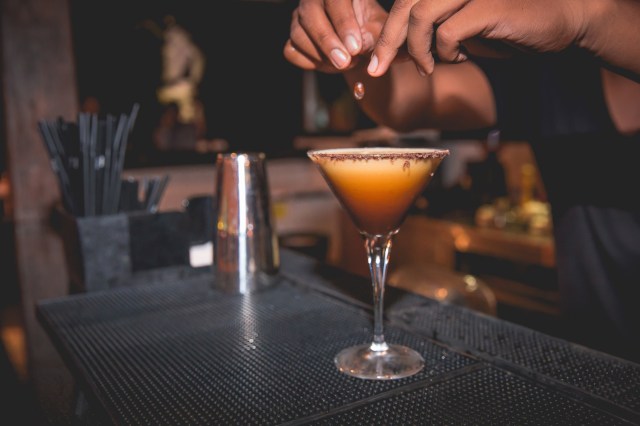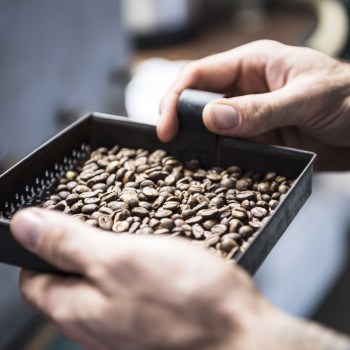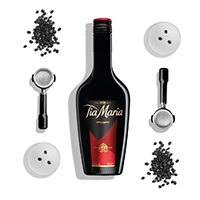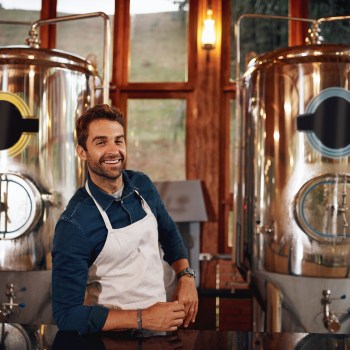In our May/June Issue, Fred Siggins looked at how Aussie bartenders are updating the espresso martini. The following is an extract from that feature – for the rest, keep an eye out on next week’s newsletter.
Australia’s dual obsessions with coffee and cocktails continue apace, the two converging into our nation’s favourite tipple, the humble espresso martini. But after twenty years of strict adherence to the 1980s recipe popularised in Australia by waves of ex-pat British bartenders, the coffee drink we love to hate is finally getting an update.
While Eau De Vie’s longstanding Espresso Zabaione is now entrenched as one of the most ‘instagramable’ #cocktails in the world, the rest of us have been a little slow on the uptake, preferring to stick to the combination of fresh espresso, vodka, coffee liqueur and sugar that’s helped us stuff so many pineapples in the till over the years.
But recently we’re seeing an uptick of creativity as our national cocktail is elevated to the status of craft.
ESPRESSO MARTINI ON TAP
At Melbourne’s Black Pearl for example, six months of trial and error has finally led to an espresso martini on tap. The crew at BP wanted to do a tapped version due to the overwhelming popularity of the drink, and a desire to make their most-ordered cocktail faster and more consistent.
According to manager Chris Hysted, they were also “really excited by what we could achieve texturally, and getting the head right was the toughest part.”
“Beer has more protein than coffee and protein is what allows bubbles to hold, so it was difficult to nail. But we did get it right and we’re really happy with the results.
“We had a customer in a couple weeks ago who was a bit skeptical, but once she’d tried it, she said it was like the difference between a shitty airport espresso and the one you get when you come home to Melbourne – we use that line a lot now!”
It is a drink of simple beauty, settling in your coupette as swirls of tiny bubbles coalesce into an ultra creamy head, like storm clouds forming in a Guinness sky. Nutty, fruity and slightly acidic like high cocoa chocolate, it’s drier but also less astringent than the traditional version, as all those tiny bubbles carry every flavour note from the excellent espresso across your palate without a hint of oxidation.
The Pearl crew are keeping up the quality, and also helping to close the loop, by using waste espresso from Plug Nickel café up the road. Most cafes will always pull two shots at a time, even if they’re only serving one, creating a lot of excellent espresso that usually goes down the drain. And as Hysted says, “they make better stuff than we could ever make anyway.”
TIA MARIA GETS ONBOARD
The trend towards craft coffee cocktails isn’t isolated to Australia, either. Coffee liqueur brand Tia Maria has recently launched the Tia Maria + Coffee Project Down Under, a global initiative uniting coffee culture and the cocktail hour.
The project aims to bring Bartenders and Baristas together to combine each other’s craft in innovative coffee cocktails that go beyond the iconic Espresso Martini.
Flavio Lasalandra, International Marketing Director at Tia Maria, says, “There’s an increasing love for coffee cocktails, which can be seen at world-class bars in key cocktail cities, while artisan coffee houses are now serving cocktails through the night as a café nightlife culture continues to emerge.
“The bartender and barista play a very similar role so it’s no surprise we’ve brought the two together to drive this new coffee revolution.”
RISING POPULARITY
For further evidence that coffee cocktails are more popular than ever, just see the packed out espresso martini festivals recently held in Melbourne and Sydney thanks to Mr. Black, whose brand ambassador Malcolm Gandar says both punters and bartenders are realizing that it doesn’t have to be a shitty drink.
Gander and his team have created a custom cold drip specifically for use in cocktails. “Coffee is either made cold or hot,” he explains. “What most people do is hot brewing like espresso, plungers, etc. and the advantage there is that you can make a lot very quickly.
“The problem is that it oxidizes very quickly too, so from a bar point of view that’s not very helpful. We wanted to replicate the texture and bold flavour of espresso, but do it cold so bars don’t have to worry about it going off. So we do an intense cold brew with a very high coffee to water ratio, and we use a wine press to extract the oils from the grounds.”
According to Gandar, coffee is far from a monolithic flavour, containing over one thousand aromatic compounds (compared with two hundred in wine, for example). As such, there’s a whole world of flavours to explore and match; different coffee pairing with certain spirits much the way you might choose a particular vermouth or garnish to match a specific gin.
Continued next week…



